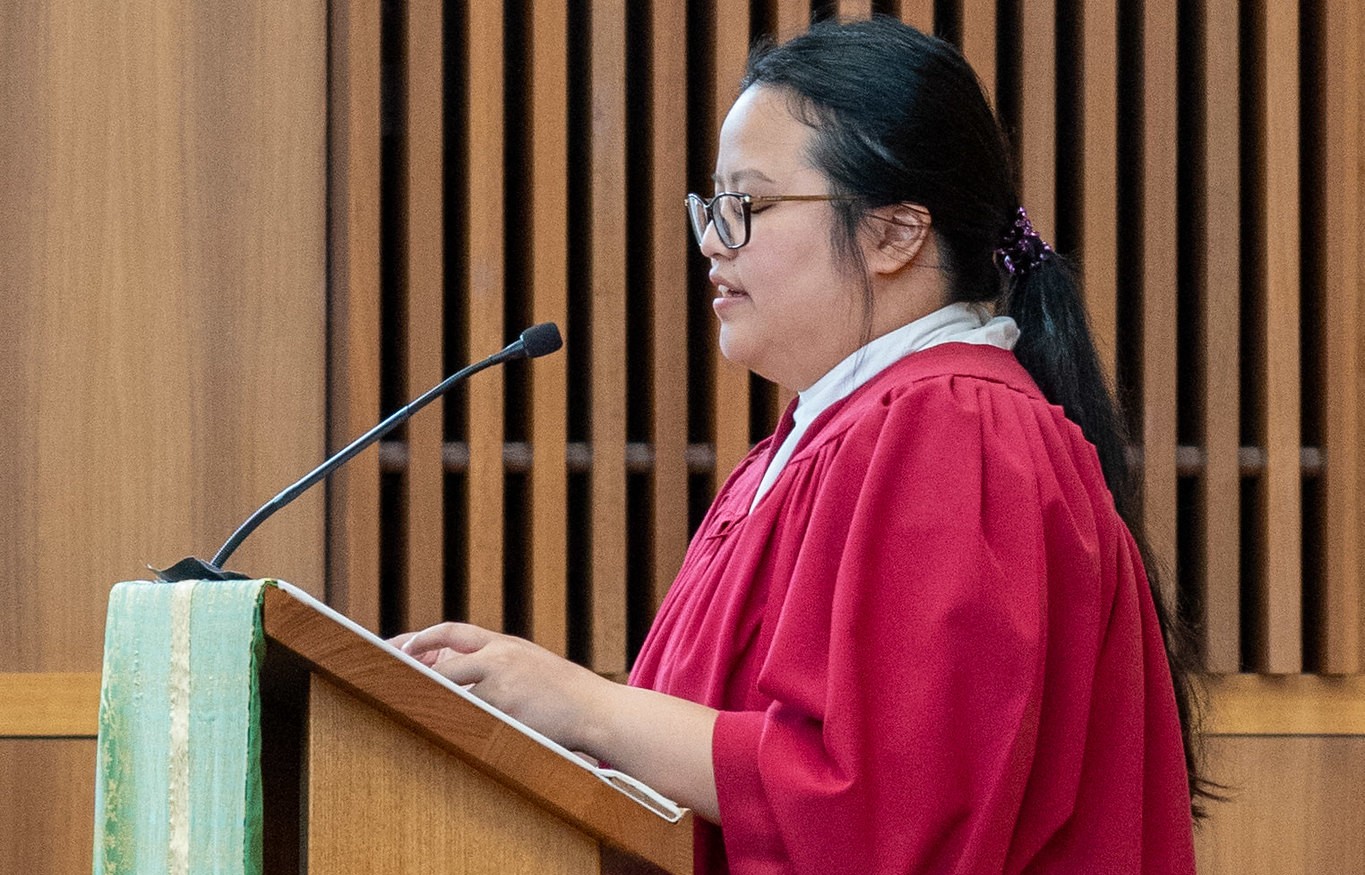Psalms in the Liturgy
Cathy Murrowood

When praying, psalms and music go hand In hand. Both have the power to raise our hearts and minds to God, evoke holy thoughts, help us give thanks in time of favour, and bring consolation and constancy in adversity.
The psalms are not readings nor were they specifically composed as prayers. They are poems of praise, thanksgiving and lament that cry out to be sung. They echo the voice of our common humanity and place us in God's presence. Our lives of faith move from being securely oriented, then painfully disoriented and surprisingly reoriented. The song of the psalmist is our song.
The psalms and canticles are integral to the liturgy. In the Prayer of the Church, the number of psalms may vary but generally there are two psalms and a canticle after the hymn, as well as the Gospel Canticle sung after the scripture reading. They are not included to make up a certain quantity of prayer but serve to open the hearts of those present to worship.
There are several ways to sing the psalms. A most ancient method is to divide the singers into two groups which take it in turns to sing each verse. This is the way the psalms and canticles are prayed in the Prayer of the Church. The assembly is arranged in choir or monastic formation with the groups facing each other. This method enables longer tracts to be prayed comfortably and without fatigue. Its alternating structure is meditative and prayerful. Antiphons of the day are sung at the beginning and end of each psalm.
Responsorial psalmody is perhaps more familiar through its use in the Liturgy of the Word. Normally a psalmist intones the refrain which is repeated by all present. Each verse sung by the psalmist is followed by the refrain. By using a single voice, the words are more clearly understood, enabling all to meditate on the word. If the psalm of the day cannot be sung, a common psalm may be substituted; such ls the importance the Church gives to singing in the Liturgy of the Word.
Music for the psalms may be simple tones or chants using only two or three notes for a line of text. Although psalm tones can be used for all psalms and canticles, they are especially valuable when singing longer psalms. One of the most famous composers of psalm tones is Joseph Gelineau SJ. Using the Grail translation of the psalms he created music based on the idea of 'sprung metre'. This technique enables lines of different length to be sung with a natural rhythm over a fixed number of stresses. His published settings conclude with Glory be to the Father... the traditional Trinitarian ending of the psalms in the Prayer of the Church. This verse is omitted if the setting is sung as a responsorial psalm at Mass. Composers use psalm tones because they are an easy musical form for cantors to learn and the text is very prominent. Only a few notes are needed to sing a whole verse. A noted Australian composer of psalm tones is the late Colin Smith CFC who has published music for the all the responsorial psalms found in the Sunday Lectionary.
Many modern composers prefer to write psalm melodies that are more lyrical in style. Experienced cantors and those who can read music or have access to good recordings often indicate a preference for psalms with a tuneful melody. These range from simple tunes to more intricate melodies with complex harmonies. The better compositions feature melodies that are sympathetic to the meaning of the text and enable the sung prayer to extend to a deeper and more profound level.
Some tips for singing the Psalms in the Prayer of the Church
• When teaching a simple psalm tone, sing the Glory be the Father verse - !earning a tune with familiar words is easier.
• If using psalm tones, underline the syllables to show when the note changes.
• There are many fine metric versions of the Gospel Canticles employing well-known tunes.
• If you do not have a melody, sing the antiphon on a single note - make it the same as the starting note of the psalm verses.
• The leader, if comfortable, can lead one side of the singing and the cantor can lead the other.
• If you only have one cantor, alternate the verses of the first psalm between cantor and assembly; for the second use a responsorial setting; then sing the third using the same tone as the first psalm only this time encourage the assembly to alternate verses in two groups.
• Oh, and sing the Lord's Prayer unaccompanied.
This article was originally published in Liturgy News Vol 38(1) March 2008. Reprinted with permission.
